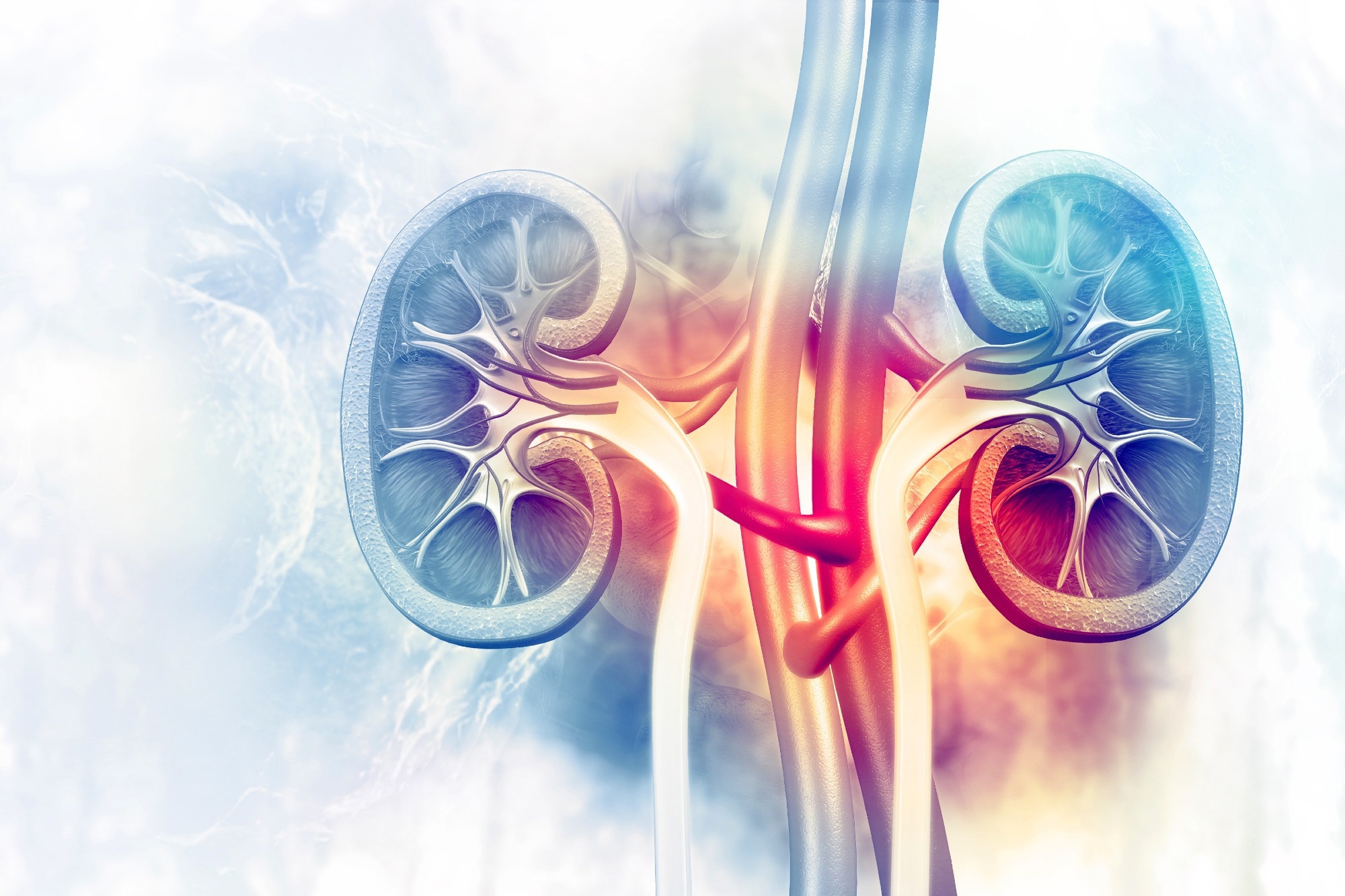In a recent study published in the BMJ, researchers created and validated a model to predict severe acute kidney injury in patients receiving cisplatin using data from various cancer centers.
 Study: Derivation and external validation of a simple risk score for predicting severe acute kidney injury after intravenous cisplatin: cohort study. Image Credit: crystal light / Shutterstock
Study: Derivation and external validation of a simple risk score for predicting severe acute kidney injury after intravenous cisplatin: cohort study. Image Credit: crystal light / Shutterstock
Background
Cisplatin remains a key chemotherapy agent for numerous cancers. However, it poses a high risk of causing cisplatin-associated acute kidney injury (CP-AKI), limiting further treatment options and increasing toxicity risks. Identifying those at high risk for CP-AKI is vital for adjusting treatment and improving clinical trial participant selection. Despite its widespread use, current research on CP-AKI risk factors is limited by small sample sizes and inconsistent definitions of kidney injury. Further research is needed to enhance CP-AKI risk prediction and create targeted prevention methods, ensuring safer treatment plans for patients undergoing cisplatin therapy.
About the study
In the present multicenter cohort study, adults were treated with intravenous cisplatin at six major academic cancer centers across the United States (US), including Memorial Sloan Kettering Cancer Center and Massachusetts General Hospital. They were examined to identify risk factors for CP-AKI. The study focused on individuals over 18 years old receiving their first dose of cisplatin between 2006 and 2022, excluding those with end-stage kidney disease or missing baseline serum creatinine values. Data were collected on various patient characteristics and laboratory values to analyze outcomes related to serum creatinine level, kidney replacement therapy, and survival post-cisplatin treatment.
The primary outcome was CP-AKI, defined as a significant increase in serum creatinine or the need for kidney replacement therapy within 14 days of the first cisplatin dose, indicating moderate-to-severe kidney injury. Secondary outcomes included alternative CP-AKI definitions and major adverse kidney events within 90 days.
The study used multivariable logistic regression to identify predictors of CP-AKI and developed a simple risk model to enhance clinical decision-making. Statistical analyses assessed model calibration, discrimination, and validation, comparing it with previous models and conducting additional analyses on CP-AKI severity and its impact on survival. Patient feedback was also gathered through surveys and focus groups, emphasizing the importance of the study's findings for individuals considering cisplatin treatment.
Study results
The present study initially examined 34,122 patients treated with intravenous cisplatin across six institutions, narrowing down to 11,766 in the derivation cohort and 12,951 in the validation cohort after exclusions. An examination of baseline characteristics revealed notable similarities between both cohorts, although with variations in the prevalence of conditions such as hypertension, diabetes mellitus, congestive heart failure, and cirrhosis, which were more common in the validation cohort. Conversely, chronic obstructive pulmonary disease was more prevalent in the derivation cohort. Additionally, the median dose of cisplatin administered was higher in the derivation cohort compared to the validation cohort.
In terms of the study's secondary outcomes, the primary model demonstrated consistent discrimination across five additional analyses. Particularly, the model's concordance (C) statistic, an indicator of its discriminative ability, remained stable at 0.75 even after excluding patients who only had serum creatinine follow-up within four days post-cisplatin administration. This exclusion involved 1,581 out of 36,483 patients, representing 4.3% of the total.
When adjustments were made for the first two secondary outcomes, the model exhibited C statistics of 0.71 and 0.74, employing a more liberal and stricter definition of CP-AKI, respectively. Its ability to discriminate was further highlighted in secondary analyses, where it consistently surpassed three earlier models in forecasting CP-AKI.
The model was more effective in identifying patients at risk for major adverse kidney events within 90 days of treatment, achieving a C statistic of 0.79, which was significantly better than previous models. There was a direct correlation between the severity of CP-AKI and reduced survival rates at both 90 days and one year, underscored by a significant log-rank test (P<0.001) and an adjusted hazard ratio of 4.63 for stage 3 acute kidney injury compared to no acute kidney injury. This highlighted the severe impact of CP-AKI severity on survival. Additionally, a higher stage of CP-AKI was consistently associated with an increased likelihood of experiencing major adverse kidney events within a 365-day period, emphasizing the long-term risks linked to CP-AKI.
Conclusions
To summarize, in the significant study, this innovative score, which incorporates nine readily available variables, effectively differentiates patients at varying risk levels for CP-AKI. Notably, the study identified novel risk factors for CP-AKI, including hypomagnesemia. It highlighted the association between CP-AKI severity and decreased survival rates, underscoring the importance of accurate risk prediction for improving patient care and outcomes in cisplatin therapy.
Journal reference:
- Gupta S, Glezerman I G, Hirsch J S, et al. Derivation and external validation of a simple risk score for predicting severe acute kidney injury after intravenous cisplatin: cohort study, BMJ (2024), doi:10.1136/bmj-2023-077169, https://www.bmj.com/content/384/bmj-2023-077169